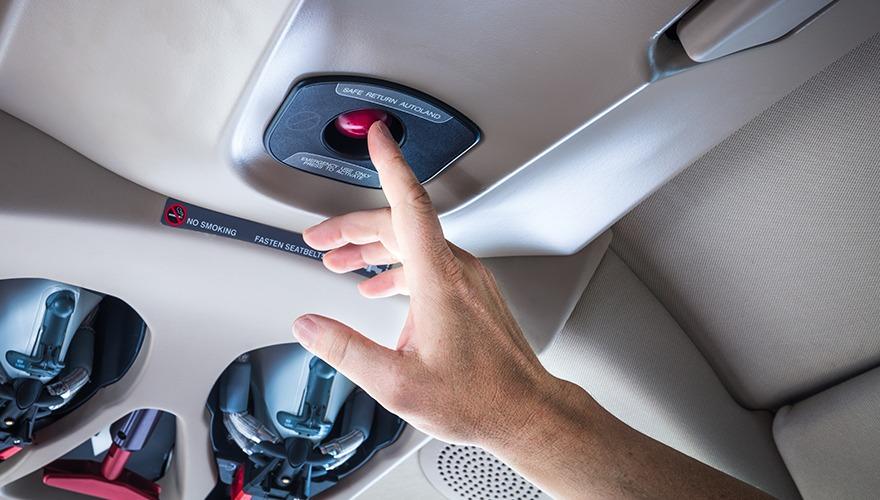
Cirrus Aircraft and Garmin have announced that Garmin’s autoland system for the Cirrus Vision Jet has received FAA certification.
The Safe Return system allows passengers to land the Vision Jet by touching a button located on the cabin’s ceiling should the pilot become incapacitated. Once activated, the system assumes control of the aircraft, turning it into an autonomous vehicle that navigates to the nearest suitable airport for landing. It communicates with air traffic control, lands and brings the aircraft to a stop. The system is powered by a Garmin flight deck, called Cirrus Perspective+, to calculate the flight plan, avoid terrain and weather, initiate an approach and land the aircraft without intervention.
“With Safe Return, we are making personal aviation more accessible, elevating the passenger experience and taking the next step toward autonomous flight,” said Zean Nielsen, Cirrus Aircraft CEO. “The Vision Jet sets a new standard in personal travel with the combination of Safe Return and CAPS (Cirrus Airframe Parachute System), offering the ultimate level of safety, control and comfort for the pilot and passengers.”
The system also provides visual and aural updates to passengers, informing them of their current location, remaining fuel, destination airport and time of arrival. The system can also be disengaged if inadvertently activated.
Cirrus delivered its 200th Vision personal jet in July.
In May, Garmin’s autoland system received FAA certification for the Piper M600 single-engine turboprop. And in August, it received European Union Aviation Safety Agency (EASA) and FAA certification for the Daher TBM 940 turboprop.





